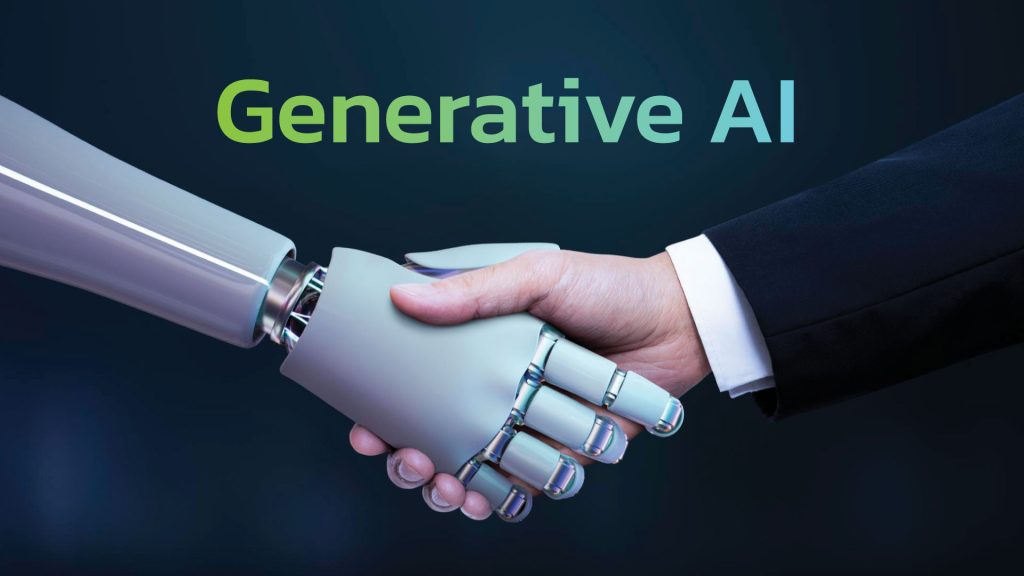
Generative AI is making waves across industries in 2024, and developers are on the lookout for the best tools to create cutting-edge AI models. Whether you’re diving into natural language processing (NLP), computer vision, or working on projects that mix different types of data (multimodal), having the right tools is key to your success. The right generative AI development tools can really set your project up for success—or slow you down if you choose the wrong one. In this guide, we’ll walk you through some of the top AI tools out there to help you pick the best fit for your needs.
1. TensorFlow: The Powerhouse for Generative AI
If you’re diving into generative AI development in 2024, chances are you’ve come across TensorFlow—one of the most trusted and widely-used AI tools out there. Created by Google, TensorFlow is like the Swiss army knife for AI developers, packed with all the tools you need to build powerful generative models. Whether you’re working on text generation, image creation, or something more complex, TensorFlow has got you covered.
What makes it a favorite? Flexibility and scalability. TensorFlow works well for projects of all sizes and levels of complexity, making it perfect for developers who need to fine-tune their models or take them to the next level. Plus, with built-in support for natural language processing (NLP) and computer vision, it’s a one-stop shop for all your AI needs.
- Key Features: TensorFlow Hub, TensorFlow Extended (TFX), TensorFlow Lite
- Perfect For: Text generation, image creation, GANs (generative adversarial networks)
- Why Developers Love It: It’s flexible, scalable, and backed by Google’s innovation.
If you’re just starting or are a seasoned pro, TensorFlow is a reliable choice for generative AI development.
2. PyTorch: The Developer-Friendly Generative AI Tool
PyTorch, an open-source framework from Facebook AI Research, is celebrated for its ease of use and flexibility. It is widely used by AI researchers and developers who focus on generative models, such as GPT-based language models and GANs. In 2024, PyTorch is gaining traction for its seamless integration with Python, making it a top choice for those working on cutting-edge generative AI projects.
- Key Features: Dynamic computation graph, PyTorch Lightning, TorchServe
- Use Cases: Text generation, AI-driven creative content, neural network experimentation
3. Hugging Face Transformers: Simplifying NLP Generative AI
For developers focused on natural language processing and conversational AI, Hugging Face Transformers is a go-to tool in 2024. Hugging Face offers a vast library of pre-trained models, allowing developers to easily fine-tune and deploy models for text generation, machine translation, and question-answering systems. The platform also supports multimodal AI, making it an excellent choice for generative AI tasks involving both text and image data.
- Key Features: Pre-trained models, seamless integration with TensorFlow and PyTorch
- Use Cases: Chatbots, content generation, multimodal AI applications
4. Runway ML: Generative AI for Creators
Runway ML stands out as an intuitive platform for non-developers and creators looking to harness the power of generative AI. With easy-to-use tools for generating images, videos, and even music, Runway ML has gained popularity in 2024 among content creators, artists, and marketers. Its user-friendly interface and accessibility make it a favorite for AI-driven creative content.
- Key Features: Pre-trained models, no-code interface, real-time collaboration
- Use Cases: AI-generated art, video editing, AI-powered creative projects
5. Stable Diffusion: High-Quality Image Generation Tool
Stable Diffusion is one of the most impressive tools in 2024 for generating high-quality images. Used by developers and artists alike, Stable Diffusion leverages deep learning models to produce stunning visuals from simple prompts. Its ability to handle complex image synthesis makes it ideal for projects in graphic design, advertising, and entertainment.
- Key Features: High-resolution image generation, user-friendly API, open-source
- Use Cases: Image generation, AI-powered design, visual content creation
6. OpenAI GPT-4: Pioneering Language Generation
The release of GPT-4 in 2024 has solidified OpenAI’s position as a leader in the generative AI space. GPT-4’s advanced language capabilities enable it to generate human-like text, assist with code generation, and even contribute to AI-driven creativity. Developers can integrate GPT-4 into their applications for chatbot development, content creation, and automated writing tasks.
- Key Features: Advanced NLP capabilities, text-to-code generation, large-scale language models
- Use Cases: Chatbots, automated content creation, AI-assisted writing tools
7. DeepMind’s AlphaFold: AI for Scientific Discovery
Although primarily known for its contributions to protein folding, AlphaFold is also making waves in the generative AI community in 2024. By predicting complex protein structures, AlphaFold has opened new possibilities in drug discovery, biotechnology, and scientific research. Developers and researchers working on generative AI for scientific applications can leverage AlphaFold’s models for groundbreaking advancements.
- Key Features: Protein structure prediction, AI for drug discovery, scientific modeling
- Use Cases: Biotechnology, pharmaceuticals, scientific innovation
8. Google Cloud AI: Scalable Generative AI Solutions
For businesses and developers looking for scalable AI solutions, Google Cloud AI provides powerful tools for building, training, and deploying generative AI models. With AutoML, developers can create custom AI models without needing deep expertise in machine learning. The platform supports text, image, and video generation, making it a versatile option for AI developers in 2024.
- Key Features: AutoML, Google Cloud Vision, scalable AI infrastructure
- Use Cases: Custom AI solutions, image and video generation, cloud-based AI applications
Conclusion
In 2024, the landscape of generative AI development tools continues to expand, offering developers an array of powerful and versatile options. Whether you’re working on text generation, image synthesis, or multimodal AI projects, these tools provide the resources needed to push the boundaries of AI innovation. By leveraging the right tools, developers can build cutting-edge AI solutions that drive creativity, efficiency, and transformation across industries.
